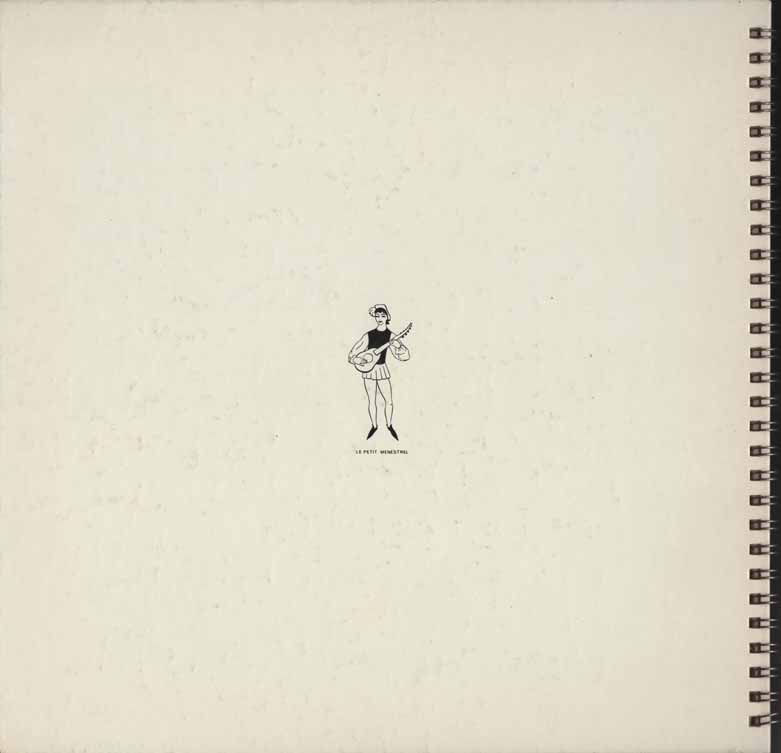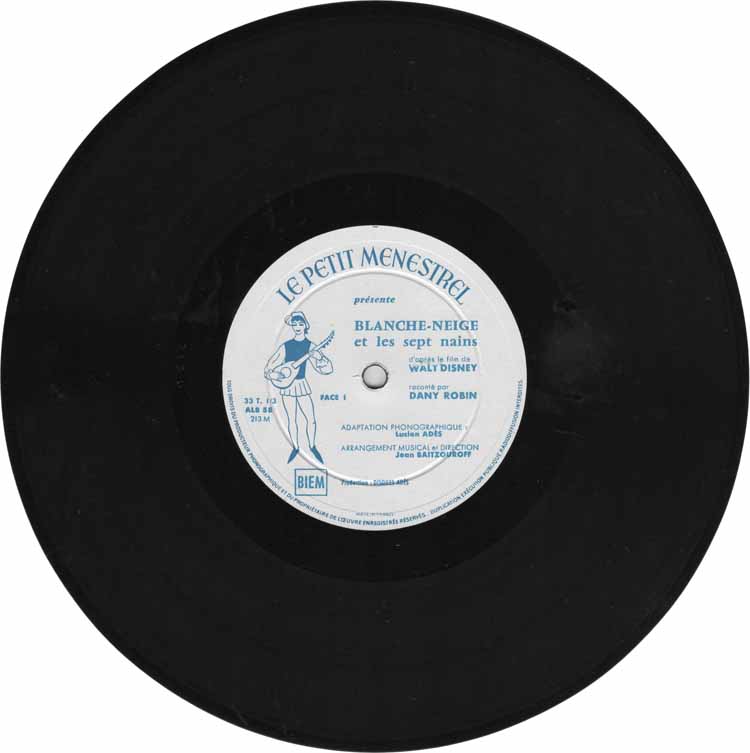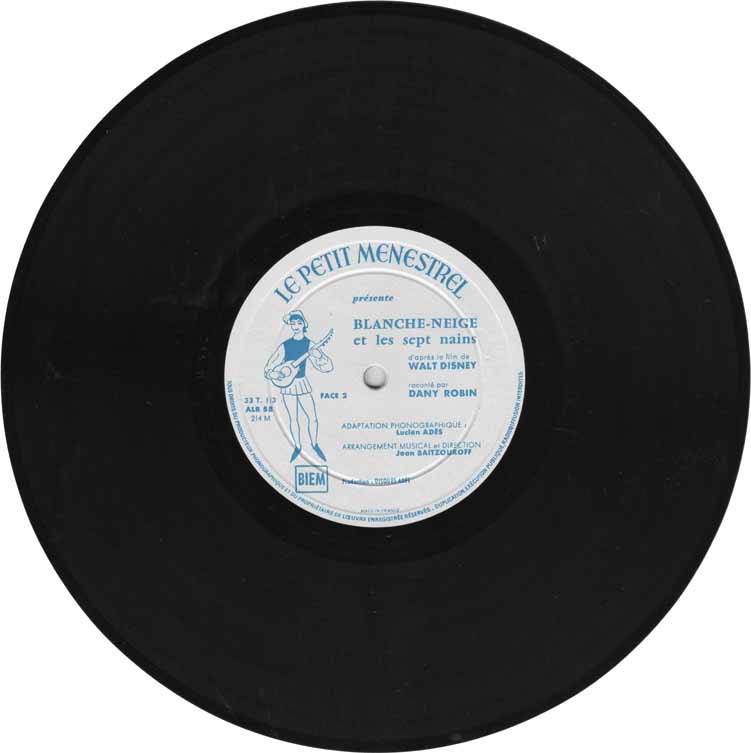Production information
Album produced by Lucien Adès editions
Record production number: The little minstrel ALB58
Release date: 1962
Country of production: France
Format: monophonic
Sound recording and editing: Europa-sonor Paris
Adaptation: Lucien Adès
Musical adaptation and orchestration: Jean Baïtzouroff
Orchestra conducted by Jean Baïtzouroff
Composed by Frank Churchill, Leigh Harline, Larry Morey, and Paul J. Smith
French lyrics by Marcel Ventura and Alfred A. Fatio
Cast
Snow White (dialogs): Sylvie Delannoy
Snow White (singing): Christiane Legrand
Queen: Claude Nollier
Prince (dialogs): François Timmerman
Prince (singing): Jean Cussac
Huntsman: François Timmerman
Doc: François Timmerman
Grumpy: Gaëtan Jor
Dwarf: Roland Koessler
Dwarf: Fred Descamps
Narrator: Dany Robin
Back to French Records
On the occasion of the French 1962 rerelease of Snow White and the Seven Dwarfs, Lucien Adès editions (141 rue Lafayette, Paris Xe) released a beautiful box set containing two 10” 33 rpm records, each featuring the story of Walt Disney’s last two successful films to be released in theaters, narrated by two French cinema stars of the time. “Sleeping Beauty narrated by Michèle Morgan” and “Snow White and the Seven Dwarfs narrated by Dany Robin”.
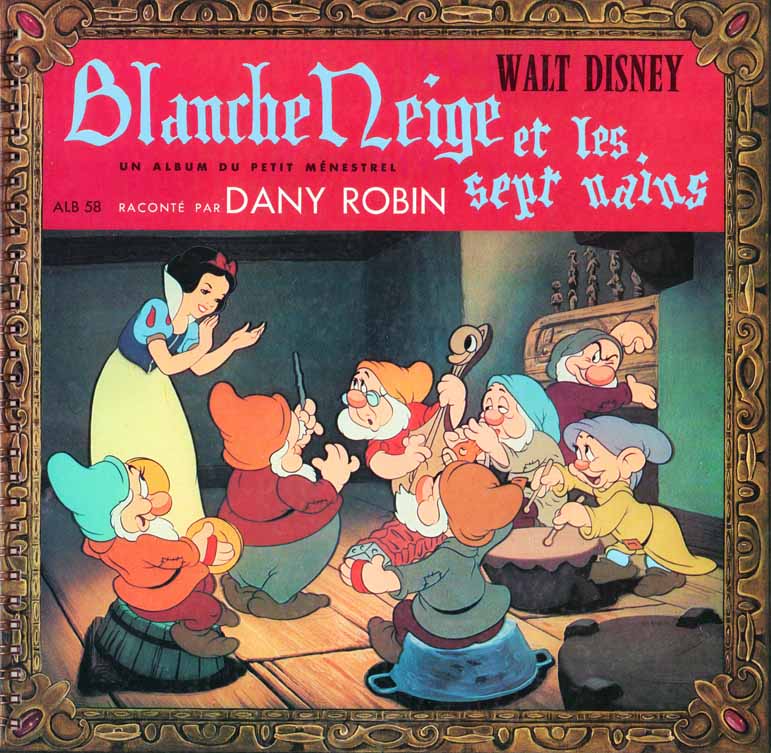
The cover
The record covers are richly decorated, and Snow White’s cover is illustrated with a drawing of the party scene with the main character and the dwarfs. Inside, the booklet printed by F. Bouchy & Sons allows you to follow the entire text of the story as heard on the record, which is stored in a sleeve bound after the last page of the booklet, which features an illustration of the little minstrel, mascot of the record collection, with the motto “The first and most beautiful collection of book-discs for children.” On the back of this sleeve, other records available in the collection are listed. The illustrations are mainly exploitation photos surrounded by original drawings, except for the Queen in front of her mirror, which is a photogram directly taken from the film. The grain and contrast of this image, of lower quality than the rest of the booklet, help understand the usefulness of creating high-quality visual supports rather than using images from the film itself. Among the original drawings in the album, the one on the first page contains animals, one of which resembles Bambi much more than one of the fawns from Snow White.
In the inner text, unlike the record cover and the film, the heroine’s name is spelled with a hyphen.
The Record
The story is told on two sides of approximately 15 and 18 minutes respectively, totaling 33 minutes. The record labels are blue. Besides the narrator, Sylvine Delannoy plays Snow White, Claude Nollier plays the Queen, while Gaëtan Jor, François Timmerman, Roland Koessler, Fred Descamps share the roles of the Prince, the dwarfs, and the slave of the magic mirror. In this version of the story, Dopey can speak.
Not a second of the film’s original soundtrack is heard in this recording; however, the narrative is punctuated with excerpts from songs taken from a concurrently released record, with Jean Baïtzouroff as the musical director (who will release records as a singer under the pseudonym Popoff), and the main interpreter is Christiane Legrand, sister of the composer Michel Legrand. When music is heard behind the narration or dialogues, it is almost always from this same record, often a particularly long introduction to a song. This unusual detail for a song record suggests that it was probably recorded specifically to be included in the present story, although it was also released separately (45 VS 556).
The record, originally sold separately, bears the serial number ALB58 and the box set ALB60 (Sleeping Beauty being ALB45). It was so successful that it apparently was reissued almost every year with the same format, the only changes being the serial number and the records promoted in the end-of-album advertisement: For example, ALB353 in 1965 with The Sword in the Stone, Mary Poppins. For the 1968 back-to-school season, the album, previously bound by spirals, was reissued in a more classically bound version under the serial number ST 353F with the record with yellow labels stored in a fold of the second cover.
The record was subsequently reissued in completely different formats but with the same recording, up to the present day where it can be listened to through internet streaming platforms.
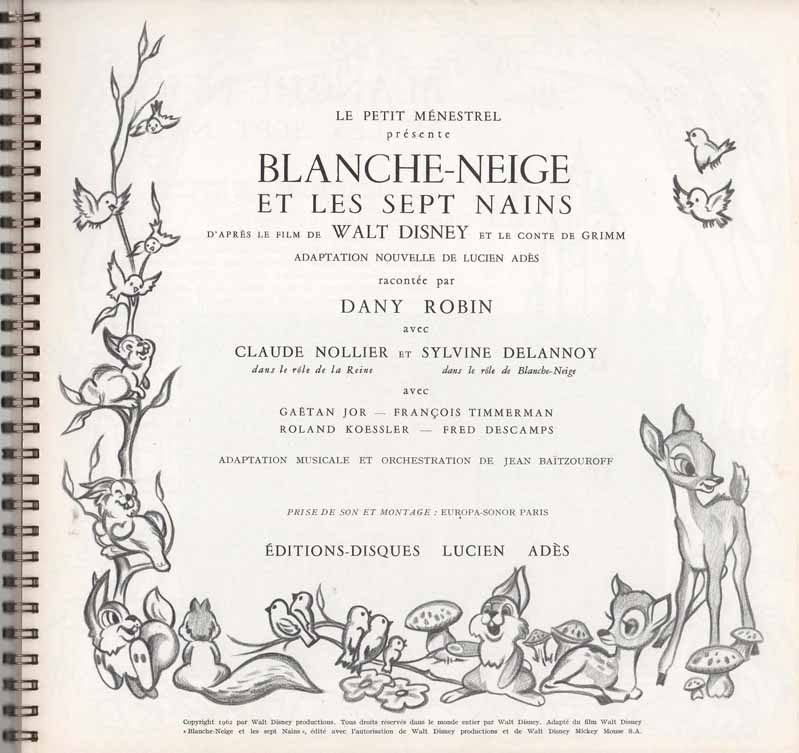
The album
Track listing
- Side A (14:50)
- Side B (18:10)















